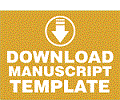IMPLEMENTASI PEMBELAJARAN TERPADU TERHADAP PERKEMBANGAN ANAK USIA DINI DI KB-TK ISLAM AL AZHAR 31 YOGYAKARTA
Sugito Sugito, Pendidikan Luar Sekolah, Universitas Negeri Yogyakarta, Indonesia
Abstract
Penelitian ini bertujuan untuk mengetahui implementasi pembelajaran terpadu pada pendidikan anak usia dini dan pengaruh pembelajaran terpadu terhadap aspek perkembangan anak. Penelitian ini adalah Penelitian metode kualitatif dengan dengan pendekatan fenomenologis yang mendeskripsikan tentang pemahaman terhadap seseorang di berbagai situasi dimana akan menjadi bagian utama dalam penggambarannya. Teknik pengumpulan data pengamatan peran serta, di mana peneliti berfungsi sebagai instrumen yang tak terpisahkan dengan subjek penelitian untuk melakukan wawancara mendalam, pengamatan terus-menerus dan studi dokumentasi. Analisis data dilakukan dengan model analisis interaktif yang dilakukan melalui empat kegiatan utama yakni: pengumpulan data, reduksi data, penyajian data dan penarikan kesimpulan atau verifikasi. Hasil penelitian menunjukkan Proses pembelajaran terpadu yang dilakukan belum memperlihatkan keterkaitan antara tema dan dilakukan melalui tahapan: kegiatan perencanaan, pelaksanaan, dan evaluasi. Pengaruh pembelajaran terhadap perkembangan anak, bidang yang paling menonjol adalah bidang sosial emosional dengan pengenalan “rewards and punishment”.
Kata kunci: pembelajaran terpadu, pendidikan anak usia dini, aspek perkembangan anak
THE IMPLEMENTATION OF INTEGRATED LEARNING IN EARLY CHILDHOOD DEVELOPMENT IN KB-TK ISLAM AL AZHAR 31 YOGYAKARTA
Abstract
This study aims to investigate: (1) the implementation of integrated learning in early childhood education, and (2) the impact of integrated learning on the aspects of children’s development. The study employed the qualitative method with the phenomenological approach in which the illustration of understanding people in different situation becomes the essential point of the data. The data were collected through participant observations, in which the researcher functioned as the instrument inseparable from the research subjects to carry out in-depth interviews, continuous observations, and documentation study. The data analysis technique was the interactive analysis model conducted in four main activities, namely data collection, data reduction, data display, and conclusion drawing or verification. The research findings are as follows. (1) The implemented integrated learning process has not shown the relation among themes and was conducted through the stages of activity planning, implementation, and evaluation. In terms of the impact of learning on children’s development, the most outstanding areas are the emotional and social areas using the introduction to rewards and punishments.
Keywords: integrated learning, early childhood education, aspects of children’s developmentKeywords
Full Text:
PDFReferences
Brostrӧm, Stig. (2006). Curriculum In Preschool. International Journal of Early Childhood, 2006, 38, 1, Research Library, p.65.
Bogdan, Robert C. & Biklen, S. K. (1992). Qualitative Research for Education: An Intriduce to Theory and Menthod. Boston: Allyn and Bacon.
Goswami, Usha. (2010). The Willey-Blackwell Handbook of Childhood Cognitive Development. Second Edition. New York: A John Willey & Sons, Ltd.
Hedge, Archana V. & Cassidy, Deborah J. (2009). Kindergaten Teachers’ Perspectives on Developmentally Appropriate Practices (DAP): A Study Conduted in Mumbai (India). Journal of Research in Childhood Education, Spring 2009, Vol. 23, No. 3, Research Library, pg. 367.
Hurlock, Elizabeth B. 1990. Psikologi Perkembangan Suatu Pendekatan Sepanjang Rentang Kehidupan. Edisi Ketiga. Jakarta: Erlangga.
Kostelnik, Marjorie J. Soderman, Anne K. & Whiren, Alice Phipps. 1999. Developmentally Appropriate Curriculum. Best Practices in Early Childhood Education. New Jersey: Prentice-Hall, Inc.
Morisson, George S. (1988). Early Childhood Education Today. Fourth Edition. Columbus: Merrill Publishing Company.
Morisson, George S. (1988). Education and Development of Infants, Toddlers, and Preschoolers. Glenview: Scoot, Foresman and Company.
NAEYC. 2009. Developmentally Appropriate Practice in Early Childhood Program Serving Children from Birth through Age 8. A Position statement of the National Association for the Educational of Young Children. Adopted. 2009.
Roopnarine, Jaipul L. & Johnson, James E. 2011. Pendidikan anak usia dini. Dalam berbagai pendekatan. (Terjemahan Sari Narulita).
Santrock, John W. (1980). Life-Span Development. Perkembangan Masa Hidup. Edisi Ke lima. Jakarta: Erlangga.
Umek, Ljubica Marjanovič, Fekonja, Urŝka, Katja BAJC, et al. (2006). The Effect of Preschool and Quality of Home Literacy Environment on The Child’s Language Development. Studia Psychologica. 48, 2006, 2.
DOI: https://doi.org/10.21831/jppm.v1i2.2686
Refbacks
- There are currently no refbacks.
Copyright (c)
JPPM (Jurnal Pendidikan dan Pemberdayaan Masyarakat) indexed by:

JPPM (Jurnal Pendidikan dan Pemberdayaan Masyarakat) by http://journal.uny.ac.id/index.php/jppm/index is licensed under a Creative Commons Attribution-ShareAlike 4.0 International License.




























